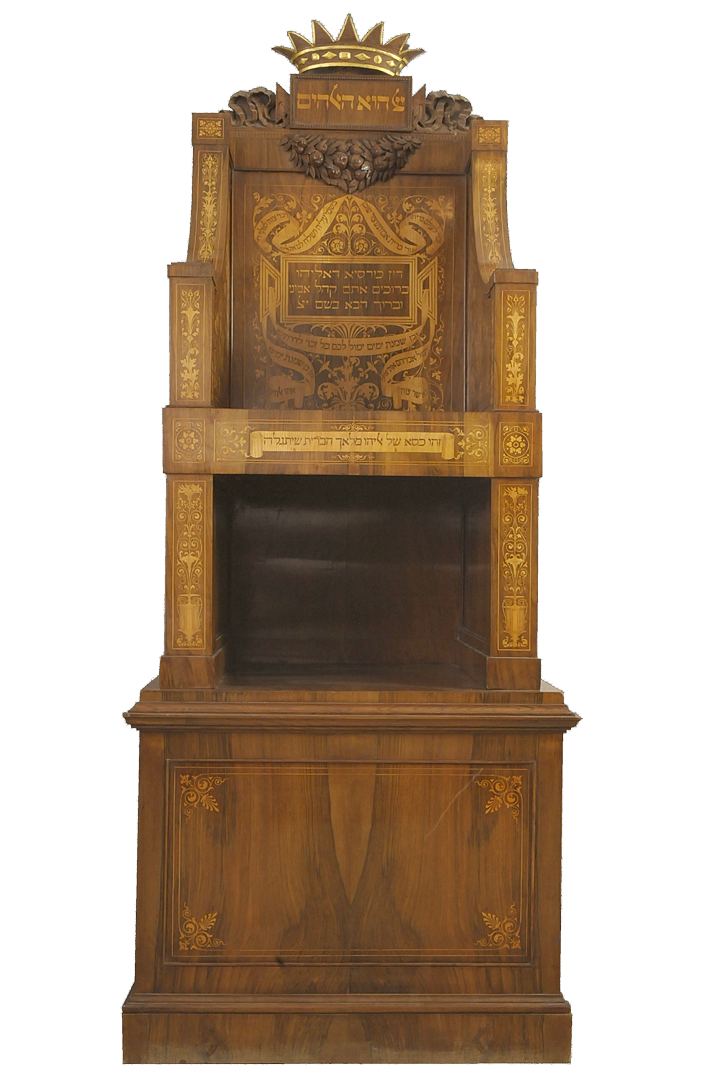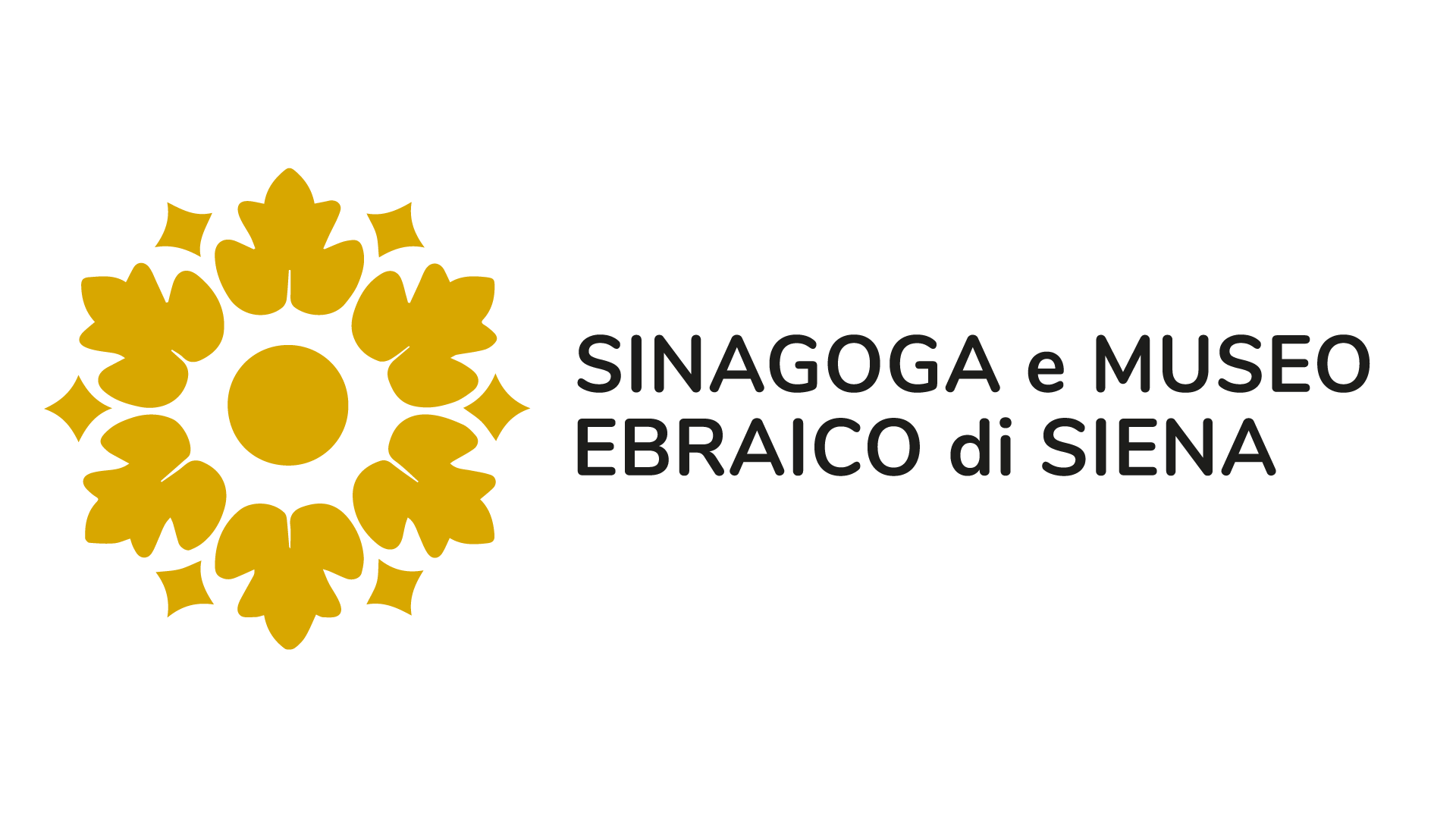
This is the Chair of the Prophet Elijah
BLESSED ARE YOU MAY YOU BE A FAITHFUL CONGREGATION
Elijah’s Chair or Kursajà de’ Eliyahu, one of the most valuable items in the Synagogue of Siena, testifies to the development of this liturgical accoutrement, enriched with numerous biblical inscriptions, in Italy’s Jewish communities between the 18th and 19th centuries.
The chair was commissioned and donated to Siena’s Jewish community by Rabbi Shemuel Nissim in memory of his father Eliyahu Nissim, as specified in the dedicatory inscription in the centre of the seat. The chair, in carved and veneered walnut wood decorated with partly gilded inlay, was made in 1859 by artists associated with the Sienese Purist school, whose monograms may be seen on the right side of the chair. Also on the right side of the chair we can see, inlaid in Hebrew characters, the name of Shemuel Cabibbe, who composed the dedicatory inscriptions and chose the bibilical verses adorning the chair’s back rest and arm rests.
Elijah, the prophet who announced the coming of the Messiah, plays a central role in the Jewish circumcision ceremony (brit milah). According to the rabbinical interpretation of certain passages in the Bible, he is called Mal’ackh ha-brit, ”the angel” (or messenger) of the pact. In Jewish tradition the Prophet Elijah, though invisible, is believed to attend and to watch over every circumcision ceremony in order both to protect the boy and to testify that the precept has been complied with. His presence serves as a good omen and reaffirms the notion of hope and salvation that is ideally renewed every time the earth rejoices at the gift of a new life. That is why a special chair is prepared for him. ome of the texts containing the brit milah ritual include special prayers that both the circumcisor and the child’s father recite before the circumcision takes place. A few verses of a welcome hymn may be seen in the centre of the back rest: “Blessed are you, community of my faithful, and blessed is he who comes in the name of the Lord”.
The chair was commissioned and donated to Siena’s Jewish community by Rabbi Shemuel Nissim in memory of his father Eliyahu Nissim, as specified in the dedicatory inscription in the centre of the seat. The chair, in carved and veneered walnut wood decorated with partly gilded inlay, was made in 1859 by artists associated with the Sienese Purist school, whose monograms may be seen on the right side of the chair. Also on the right side of the chair we can see, inlaid in Hebrew characters, the name of Shemuel Cabibbe, who composed the dedicatory inscriptions and chose the bibilical verses adorning the chair’s back rest and arm rests.
Elijah, the prophet who announced the coming of the Messiah, plays a central role in the Jewish circumcision ceremony (brit milah). According to the rabbinical interpretation of certain passages in the Bible, he is called Mal’ackh ha-brit, ”the angel” (or messenger) of the pact. In Jewish tradition the Prophet Elijah, though invisible, is believed to attend and to watch over every circumcision ceremony in order both to protect the boy and to testify that the precept has been complied with. His presence serves as a good omen and reaffirms the notion of hope and salvation that is ideally renewed every time the earth rejoices at the gift of a new life. That is why a special chair is prepared for him. ome of the texts containing the brit milah ritual include special prayers that both the circumcisor and the child’s father recite before the circumcision takes place. A few verses of a welcome hymn may be seen in the centre of the back rest: “Blessed are you, community of my faithful, and blessed is he who comes in the name of the Lord”.
